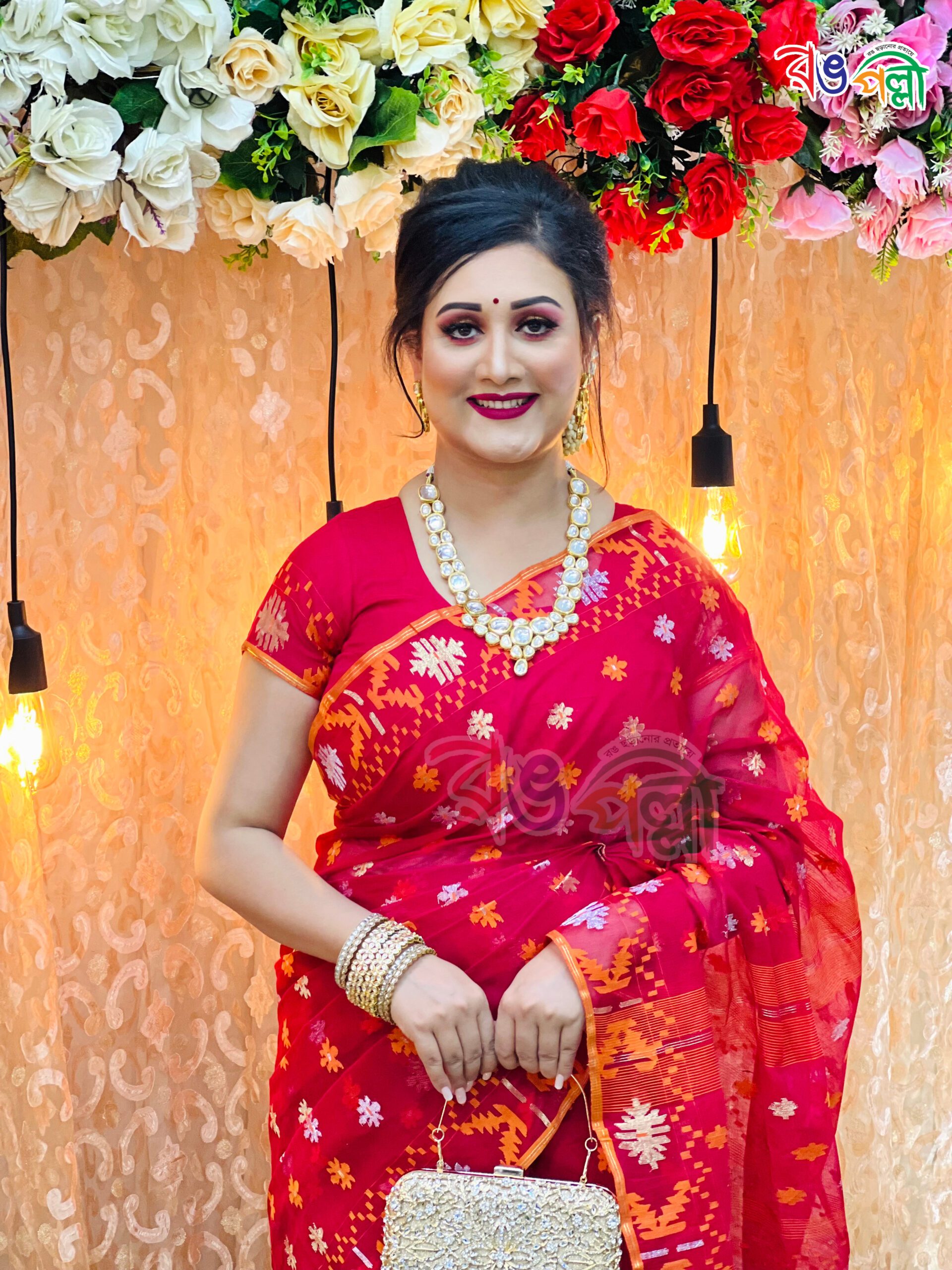Enriched traditional background of Jamdani Saree
Bangladesh’s heritage is embodied in the exquisite weaving patterns of Jamdani. Its history is linked to Bangladesh’s best cloth, muslin, which dates back a century. The primary source of the patterned fabric known as jamdani is muslin, a blend of cotton and gold thread is used to weave it. Jamdani was first produced during the reign of the Mughal monarchs.
Bengal’s textile industry suffered quite a lot during British colonization, but Jamdani art persevered through all the ups and downs carrying a charm and charisma through many centuries.
Artisans in Dhaka, Bangladesh have historically woven Dhakai Jamdani, a lovely cotton fabric with vivid patterns, on handlooms. One of the most well-known fabrics, Dhakai Jamdani, is another term for the jamdani saree and denotes a rich cultural heritage.
Traditional significance
Jamdani clothes hold great cultural and symbolic significance in South Asian society, surpassing its visual appeal. Originally worn by nobility and aristocracy, jamdani fabrics were highly prized as status, wealth, and prominence.
Exquisite Designs
Jamdani sarees have Jalpar, Jabaful, Corola, Tercha, Dubla, Bolihar, Panna Hazar, Pansi, Batpata, Katihar etc designs. Through the passage of time the design patterns has also gone through creative revolution.
Identification of original Jamdani Saree
Although it is quite difficult to differentiate between the original and fake saree by just looking at the design and color. The market is now full of different kinds of jamdani including soft jamdani, Dhakai jamdani, Bengali jamdani. The price of these also varies. Thinking that it is original, many people are buying the fake at a higher price.
Original Jamdani sarees are hand woven. So its design is very detailed, fine and perfect. The designs are very smooth. Jamdani is woven back and forth by the weavers with the help of a single thread. No part of the thread of this saree is exposed. Thus Jamdani sarees have the same texture on the front and back. Cotton and silk threads are used in authentic Jamdani sarees.
Yarn count indicates yarn quality. The finer the yarn, the finer the work. But how fine and beautiful the saree will be depends on the skill of the weaver. Finer yarn means it takes longer to weave but costs more.
On an average, a weaver has to work for 12-14 hours to make a Jamdani. But it all depends on the design of the saree. So it takes 1 week to 6 months to weave a Jamdani saree. And 8-10 machine woven sarees are made in a week. So machine woven saree’s price is also very low.
Determining the Value of a Jamdani Saree
While making an original Jamdani saree, the price is determined according to the quality of the thread and the type of work. In this case, a Jamdani saree can cost up to Tk 3000-1,20000 or more. So, before buying Jamdani, checking whether it is genuine or fake is a must.
Jamdani sarees are the true representation of our rich history and traditional presence. Let’s embrace the elegance and astonishing beauty of Jamdani Saree with Rongpolli.We are proud to assist you in experiencing traditional elegance with original Jamdani Sarees.
Embracing Tradition with Rong Polli
At Rong Polli, we are proud to carry forward the legacy of Jamdani sarees. Our collection features original, handwoven Jamdani sarees that celebrate Bangladesh’s cultural heritage. Whether you’re searching for a bridal Jamdani saree at a competitive price in Bangladesh or a Bengali saree for Durga Puja, Rong Polli offers an elegant selection for every occasion.
✍ Rong Polli/Samia Chowdhury

